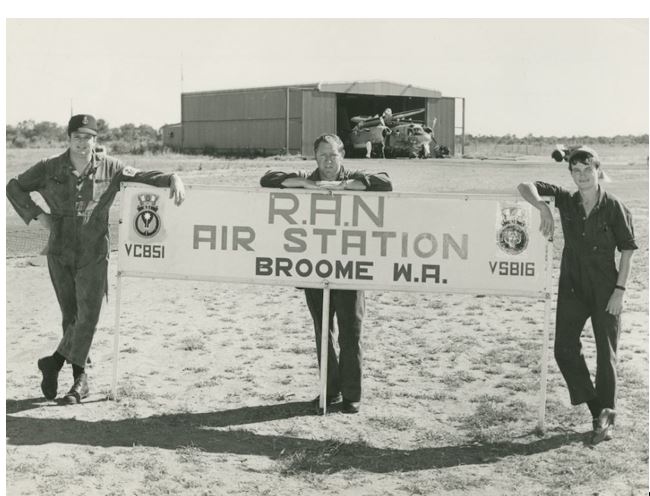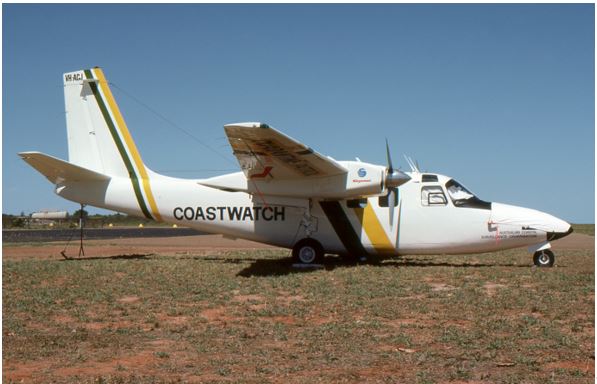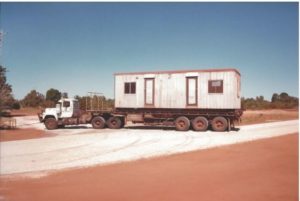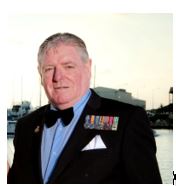- Author
- Steve Chaplin
- Subjects
- Biographies and personal histories, Naval Aviation, Aviation
- Tags
-
- RAN Ships
- None noted.
- Publication
- December 2022 edition of the Naval Historical Review (all rights reserved)
By Steve Chaplin
Background
As an island continent, Australia has an extensive coastline, not only to patrol, but also to protect. As a result of a number of events occurring in the northern waters, in 1968 maritime surveillance for civilian purposes began in order to protect the new 12 nautical mile fishing zone that had been declared in 1967.
The first surveillance was undertaken using Royal Australian Air Force (RAAF) P3 Orion aircraft. Approximately 150 hours of surveillance were flown each year. Obviously this was insufficient patrol time on task, given distances and locations. The Royal Australian Navy (RAN) assisted with surveillance and response using patrol boats.
During the early 1970s, the activities of foreign fishing vessels in Australia increased, with 431 sightings in 1974. The most serious threat was from traditional Indonesian fishing boats landing in the Kimberley with attendant quarantine risks. Surveillance was increased to 800 flying hours and patrol boat operations extended.
Some of the more ‘sensitive’ regions in which these incursions occurred were Ashmore Reef, Rowley Shoals and of course the infamous Montebello Islands. The Indonesians were stripping out the trochus shell and of course, shark fin. Along with this, the Taiwanese fishermen were operating well within Australia’s Declared Fishing Zone (ADFZ) operating long-liners with the stripping out of areas of 100 nm blocks of the western sections of the Kimberley and Pilbara coastline.
The coastal reconnaissance operated in a difficult and demanding environment with responsibilities including the provision of surveillance and response services for approximately 37,000 kilometres of coastline and a nine million square kilometre offshore maritime area.
Also thrown into the mix were elements from the RAN operating Grumman S2E Trackers and they commenced fisheries protection patrols from 1975, an operation codenamed ‘Operation Trochus’. A detachment of three RAN Grumman S2E Trackers was initially based at Broome and ‘Operation Trochus 75’ was mounted to monitor traditional Indonesian fishing operations and prevent the illegal taking of the much-valued trochus shell from Australian waters.
The task began on 6 March 1975 from Broome in Western Australia, when three Trackers from 851 Squadron began what was intended as a twelve-month operation. The operations continued with 816 Squadron taking over on 6 May 1975. Responsibility for land-based maritime patrols was exchanged between the two squadrons until December 1980. After this time a civilian company conducted the patrols.
In August 1977 Australia declared a 200 nautical mile Exclusive Economic Zone (EEZ) and in 1978 the Minister for Transport was made responsible for civil surveillance. The Department of Transport’s Marine Operations Centre, which was responsible for ship reporting and search and rescue, was redesignated the Australian Coastal Surveillance Centre and the civilian surveillance effort extended to some 27,000 flying hours per year.
In 1982 the civilian surveillance program was given the name ‘Coastwatch’; the aircrew were dressed in uniforms and provided with more extensive training. The aircraft were upgraded with weather radar, multi-channel radios, and VLF/Omega navigation equipment.

Early Beginnings – Why the Shrike
Skywest Aviation became the successful tenderer for the new look ‘Coastwatch’ operation and the task of selecting suitable and appropriate aircraft for taskings began in earnest.
There had been countless suggestions to utilise the then available Grumman S2E Trackers from the RAN’s retired aircraft carrier HMAS Melbourne, but logistically and financially, they were proven unsuitable. Taking into consideration that the aircraft ‘may’ have been able to be purchased at a reasonably price, this was offset by several primary factors:
- All of the Military Technical Equipment would have to be removed – expensive operation,
- Reconfiguring the aircraft for ‘type’ tasking – littoral surveillance – expensive outfitting,
- Mechanically, overhaul and readily available spares for the aircraft’s radial engines – exorbitant
These were the ‘primary’ no-go items for the Trackers as the size and type of this aircraft was considered over the top and financially unsustainable.
So – to the drawing board, and what Skywest had to be mindful of was the overall cost of purchasing an aircraft that had the ability to perform to the requirements of the Commonwealth contract requirements, and to be safe, reliable and compliant in all aspects of the Civil Aviation Safety Authority (CASA) regulations.
Ideally, the aircraft needed to be of a ‘high wing’ configuration, ability to carry five crew/pax, dependable and financially viable mechanical aircraft engines, the ability to be outfitted with and operate the required sensors/radios iaw tender specs., ability to effectively operate at low level, no requirement for pressurisation, suitable for operations in tropical conditions and lastly, a proven safety record.
Several aircraft types were thoroughly investigated and considered, but overall, one aircraft stood out from the rest that contained all of what was required, and that was the Rockwell 500S Shrike Aero Commander.
Skywest operated 16 Aero Commanders, with two aircraft spare, one located in Townsville and the other in Port Hedland, which were not painted in Coastwatch livery, as the intention was for the aircraft to be utilised as a ‘covert’ platform in order to draw attention away from a surveillance operation, if and when required.
General Characteristics
Capacity (Crew/Pax) Five
Length 36 ft 9.75 in (11.22 m)
Wingspan 49 ft 0.5 in (14.95 m)
Height 14 ft 6 in (4.42 m)
Empty Weight 4635 lb (2102 kg)
Fuel Capacity 163 US gal (617 l)
Maximum Take-Off
Weight (MTOW) 6750 lb (3062 kg)
Power Plant 2 x Lycoming IO-540-E1B5, 290 hp (216 kW)
Performance Specifications
Maximum Speed 187 kts (215 mph, 346 km/h) at sea level (TAS)
Cruise Speed 176 kts (203 mph, 326 km/h) at 9,000 ft (2750 m), 75% power (TAS)
Stall Speed 59 kts (68 mph, 109 km/h) full flaps, gear down, engine at idle
Range 936 nm (1078 mi, 1735 km)
Service Ceiling 19,400 ft (5913 m)
Rate of Climb 1,340 ft/min (408 m/min)
Aircraft Type Based Operation Engine Type
Shrike 500S Aero Commander Broome Littoral Surveillance Twin Piston
14 x a/c Total Darwin Littoral Surveillance
Horn Island Littoral Surveillance
Townsville Littoral Surveillance
A logical modification to each aircraft was the fitment of two ‘bubble’ windows, one on either side of the aircraft, which allowed for a crew member to take clear and accurate photographs of items of interest. Photographs had to be developed and forwarded to Customs within 24 hours of the aircraft’s operational flight.

Flight Operations – Aero Commander 500S
In my early days of management (1989) in Port Hedland, I was required to regularly attend Coastwatch briefings and meetings at Broome. At that time, Skywest didn’t really have an onsite office or hangar facilities at the Broome Airport. After several months of searching, a demountable building was located and purchased in Port Hedland and trucked to Broome.
With the willing assistance of the Broome Coastwatch crew, contractors were hired to manufacture a concrete slab (on site) and crane our ‘new’ office into position and set it up for all of our Broome operations.
I had to take into consideration the fact that at this time in 1987/1988, there was only one aircraft hangar at Broome Airport which was operated by a private operator with several single engine aircraft performing contract/private charters to outlying stations. From here Skywest was able to achieve ‘minor’ emergency mechanical assistance if or when needed. All other mandatory/periodical maintenance was performed at our Engineering facility in Port Hedland.
In order to save the cost of commercial airfares between Port Hedland and Broome to attend contractor meetings, I regularly flew with the exchange maintenance aircraft up to Broome to conduct the swap and on one very eventful flight, the Pilot in Command (PiC) experienced one of life’s ‘moments’!
The pilot set the aircraft up for landing on Runway 10 (arriving over Cable Beach) and was down to an altitude of approx. 200/300 feet; all was proceeding normally on short finals, when to both our surprise (and terror) a bright yellow/orange parachute appeared in front of the aircraft. Deft, efficient and very rapid altitude adjustment was the order of the day and that was achieved without taking our parachutist for an unwanted ride. As the aircraft climbed and banked, I was able to identify the said ‘culprit’ and it turned out to be a speed boat operator on Cable Beach operating a paragliding venture for tourists.
Once reported, the operation was closed down, given the area of operation was directly in the glide-path for Runway 10. One could only imagine the unholy terror that could have been unleashed had one of Ansett’s BAE 146s hooked this traveller up.

The Shrike 500S was proven to be a very capable and appropriate aircraft for all of its taskings and fortunately didn’t suffer too many ‘major’ problems in terms of flight operations. Of course, operating in the tropics during the Wet Season was always going to cause a few glitches, which was often referred to as a ‘gotcha’ and it would occur at just the time you were scheduled to fly. Incessant little pests that always had you on your guard were wasps building their nests in the most inaccessible places! Not uncommon to observe a pilot running around in circles waving hands and arms in the air after discovering and disturbing a wasp nest in some part of the aircraft. Initially, observers watching the gyrating arm flinging, fist pumping performance believed that the particular individual had won Lotto and was somewhat ecstatic about winning!

Littoral Surveillance was the oft-quoted phrase when referring to the Coastwatch operations, with the word ‘littoral’ defining it as seaside/shoreline, however these gutsy little aircraft often operated out to places such as Rowley Shoals, Ashmore Reef and the Montebello Islands.
The Aero Commander 500S accomplished and performed the duties admirably and safely; basically, they were punching way above their weight for the undertaking they were tasked to perform.
Based on my personal experiences with WA and NT operations, I flew hundreds of hours in these aircraft and observing the countryside over which we flew, the 80 Mile Beach between Broome and Port Hedland was absolutely flooded at certain times of the year with migratory birds arriving for their mating season. On the other hand, a certain coastal region well to the north in the West Kimberly district would be where you certainly would not want to experience an emergency landing, either land or water. The formations around the Mitchell Plateau region would have to be the most unforgiving rock outcrops imaginable – no aircraft could or would survive a forced landing. As for a water ditching along the coastline, the periodical masses of box jellyfish certainly are not something one would like to consider, but the biggest and deadliest predator is Crocodylus porosus, more affectionately called the saltwater crocodile, and these monsters do cruise along the littoral sections of the coastline.
Scheduling of surveillance flights and maintenance was managed from the Skywest Aviation, Townsville facility, but during a normal working week, base managers were expected to assist with support to the Coastwatch Flight Operations Manager in Townsville, such as aircraft breakdowns and replacement aircraft, pilot/crew sickness/holiday provisions and any other unscheduled disruptions. A rotational weekend roster was shared by all to allow appropriate time off for base managers and Perth senior staff to ensure the Coastwatch operation was functional 24 hours per day, 365 days per year.
During the earlier periods of operations in coastal surveillance, the flights were referred to by the locals as a ‘bus route’, given that the flights all operated on a particular time and route schedule, with some saying you could set your watch to the correct time as the aircraft overflew their respective areas. As the Coastwatch operations matured, significant alterations were incorporated into these flight schedules and times in order to maintain a covert system, plus security and aircraft flight operations were restricted to only the immediate managers attached to and managing the regional flights. In this manner, many successful interdictions were achieved.
Coastwatch/Customs and the AFP interoperability managed a successful covert operation in the late 1980s; when responding to a tip off, motion detector cameras were hidden around the runway area of the old Mitchell Plateau airstrip in the northwest of Western Australia. This resulted in the successful apprehension and seizure of a significant haul of drugs which had been flown into the airstrip at first light in a medium sized twin-engine aircraft, believed to have originated from a neighbouring country to the north of Australia.
In my time with Skywest, I cannot recall any ‘major’ incident or fatality associated with the Shrike 500S aircraft and at that period, Skywest was the operator of the largest fleet of these aircraft in Australia.
One shortcoming with the aircraft was that no squat switch was fitted and Skywest only ever recorded one incident when the gear selector lever was accidently placed in the ‘raise’ position resulting in the aircraft collapsing onto the dirt. Fortuitously, no major damage was experienced and the aircraft was returned to service in a relatively short space of time – fortunately, a back-up aircraft was available to take its place!
A rather robust aircraft; an experienced engineering facility estimated an average annual inspection for a Shrike 500S could run between $3,000 to $4,000, barring unusual problems. It could even blow out to approximately $8,000 annually for maintenance. Some years it could go as high as $10,000 if you needed to work on engine mounts or redo all of the metal behind the exhaust outlets. These estimates were all based upon how many flights had been conducted. Spare parts were fairly readily available from reputable suppliers in the USA; however, they did cost some pretty big dollars. For example, two wheel rims cost more than $4,000. Rockwell International built these aircraft to military standards, thus they were built with tank-like qualities.
Steve Chaplin
Steve was born in the seaside township of Esperance, Western Australia. His parents were hoteliers and with Steve at the ripe old age of 14 months they moved to the traditionally hottest township in Australia – Marble Bar to the infamous Iron Clad Hotel. Not a wonderful experience for a baby born in the late 1940s with no air-conditioning in those days.
After graduating from Perth Modern School, Steve joined the RAN in 1965 at the Junior Recruit Training Establishment (JRTE), HMAS Leeuwin, located on the banks of the Swan River.
On completion of training, he was posted to the River-class frigate, HMAS Parramatta (III) undergoing 12 months sea time as an Ordinary Seaman Weapons Mechanic (ORDWM). Parramatta was commissioned into the RAN on 4 July 1961, so the ship was still considered modern. Parramatta served in the Far East Strategic Reserve (FESR).
Following this initial sea time, a posting to the training establishment HMAS Cerberus followed and upon qualification, an overseas appointment as part of the commissioning crew of the third and last of the Charles F Adams Guided Missile Destroyers (DDG), HMAS Brisbane. Some 12 months later after return to Australia, training began in earnest for a forthcoming deployment to Vietnam. On completion of Brisbane’s deployment on the gun-line, Steve was posted ashore, back to Leeuwin, this time in an instructor role.

Now a Leading Seaman Weapons Mechanic, possibly the highlight of his naval service was a posting to the Papua New Guinea Naval Base (PNGNB) HMAS Tarangau. Throughout his 20 year naval career, Steve served on all three DDG’s, two more River-class frigates, the Daring-class destroyer HMAS Vendetta and, prior to discharge in 1985, as a Chief Petty Officer (Chief Bosuns Mate), on the LCH HMAS Tobruk.
After relocating back to Perth (WA), Steve replied to an advertisement for an ‘Operations Manager N/W’ with Skywest Aviation and in early 1987, was pleasantly surprised to be accepted for the position and initially based in Port Hedland. Skywest Aviation formed part and parcel of the TNT/News Corp empire at that time and along with Skywest Airlines, retained very close ties with the big brother Ansett Airlines.
Over the subsequent years, Steve’s training within the aviation fraternity proceeded at an alarming and equally exciting pace. Following promotion within the company, Steve was redeployed to Darwin to take on a much larger role and elevated to Regional Manager (NT).
Skywest Aviation held significant commercial charter contracts around Australia, with the major tender being ‘Coastwatch Australia’. Operational bases for Coastwatch were Broome, Darwin, Gove (Nhulunbuy), Horn Island (Thursday Island), Townsville and Cairns.
A number of charter contracts that Steve administered and managed were:
- Coastwatch – NT and N/W WA,
- Northern Territory Aerial Medical Service,
- Argyle Diamond Mine – Kununurra Operations,
- BHP/Shell Petroleum – Cadjebut Mine Site,
- SANTOS (NT) – Truscott Off-Shore FIFO, and
- BHP (NT) – Troughton Island Off-Shore FIFO
Regrettably, with a downturn in the Australian economy in the mid/late 1990s, major corporations/industries applied some very serious financial belt tightening policies and with substantial restructuring, TNT/News Corp instituted numerous redundancies, right across the board. Sadly, at that time, Steve too was made superfluous to requirement and also joined the ranks of those departing the aviation sector.
After working and living in Darwin for over 25 years, Steve returned to Perth and by pure chance, noted an advertised position for Airport Manager – Albany (WA) and was duly employed in the role.
Steve operated in that role for three years and upon resigning, decided to return to Perth for some well-earned retirement.




